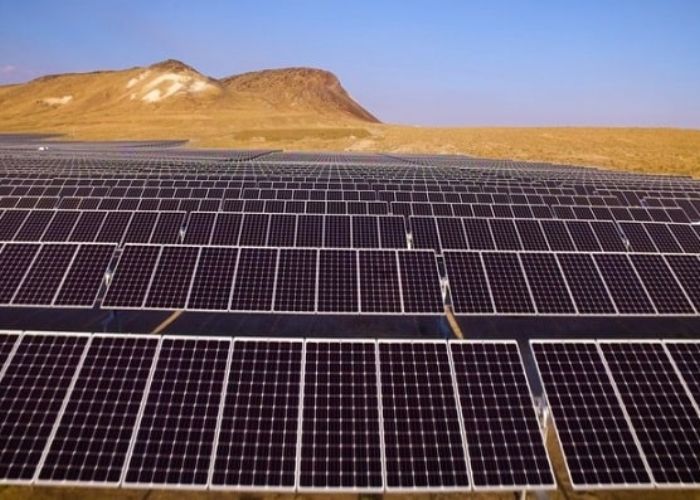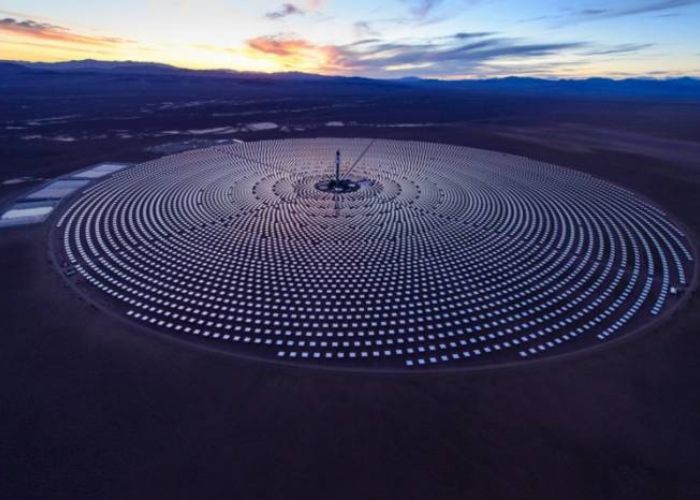I am captivated by Morocco’s Noor Solar Power Plant as an energy specialist with more than seven years of expertise evaluating global renewable energy projects. While other nations seek to wean themselves off fossil fuels, this enormous plant in the Sahara is assisting Morocco in reaching its lofty targets for renewable energy generation. Let’s read below about “Noor Solar Power Plant – Morocco’s Top Solar Energy Facility”.
In this piece, I will use my knowledge of the energy industry to give a detailed analysis of the Noor Solar Power Plant. I will discuss the project’s background, the cutting-edge technology that was used, and the effects it is having on the energy mix and economy of Morocco. Noor is a technical marvel that proves solar energy can be used at utility scales; it is one of the biggest CSP facilities on the planet.
History of the Noor Solar Power Plant
By 2030, Morocco aims to have generated 52% of its power from renewable sources. The nation is putting a lot of money into wind and solar power projects to help them attain this goal. They revolve around the Noor Solar Power Plant.
In 2013, a group of European and Saudi Arabian firms partnered with the Moroccan Agency for Sustainable Energy to begin construction on Noor. About 10 kilometers outside of the little desert town of Ouarzazate was the chosen location. Solar irradiance rates were high and cloud cover was low, making this site perfect.
Noor I was completed in 2016, Noors II and III in 2017, and Noor IV in 2018. The project was built in stages. As of 2019, the whole $9 billion complex was fully operational. Even now, it’s still the biggest solar power plant in the planet.
How CSP Technology Works
Instead than using the same old photovoltaic panels, Noor makes use of concentrated solar power technologies. Concentrated solar power (CSP) systems use lenses or mirrors to focus light from a wide region onto a tiny receiver. In order to create steam, which in turn turns a turbine and generates electricity, the concentrated energy is utilized to heat a transfer fluid.
Read More:- Top Hydroelectric Power Plants – Global Trends and New Ideas
Across the vast desert landscape of Noor, you can see an array of more than one million parabolic trough mirrors. Curved mirrors follow the sun’s movement all day long, reflecting light onto oil-filled receiver tubes. Such a setup is known as a parabolic trough. In order to make steam, the oil is heated to temperatures above 390°C and then utilized to boil water. To keep producing power even after the sun goes down, molten salt is utilized as a heat energy storage medium.
Spanning more than 3,500 football fields, the Noor facility is massive in size. All across the dry terrain, the parabolic trough arrays alone extend for miles. This highlights the enormous amount of land needed for solar electricity on a utility scale. On the other hand, the facility can avoid competition for land usage by being placed in the empty Sahara desert. The region’s solar resource is second to none, making it an ideal location for concentrated solar power (CSP) installations.
Impacts and Benefits
An important factor in Morocco’s increased use of renewable energy sources is the Noor Solar Power Plant. With all four sections completed, the plant can generate more than 580 MW of power. With its current output, Noor can offset yearly carbon dioxide emissions equal to hundreds of thousands of tons, which is enough to power more than one million households.
According to power, An estimated fourteen percent of Morocco’s electricity will come from the solar project once it’s fully operational. Solar power has tremendous potential, and this astounding feat proves it. Thanks to this initiative, Morocco will be able to generate more than 42% of its electricity from renewable sources by 2020.
Noor has not only improved Morocco’s economic and energy independence, but it has also improved the environment. In the past, the nation relied on crude oil and other fossil fuel imports to provide more than 90% of its energy demands. At last, Morocco is taking advantage of its solar power potential to power homes and businesses at a reasonable price without sacrificing quality.
In addition to improving infrastructure in rural Morocco, Noor has also generated hundreds of new local jobs. To keep the state-of-the-art solar facility running smoothly, a large number of employees needed training. New generations of Moroccans have benefited from the project’s support in their pursuit of education and professional development.

Future Expansion
Morocco intends to keep increasing its generation of renewable energy in light of Noor’s success. A new concentrated solar power (CSP) facility, Noor Midelt I, which will add 800 MW of solar capacity and costs $790 million, is now under construction directly across the street from Noor. A little further down the road, preliminary plans are underway for the massive Noor Tafilalt project. If finished, Noor Tafilalt would increase Morocco’s renewable power generation by approximately 100%, with an impressive 5,000 MW of solar power.
The falling cost of solar technology has made these prospective projects feasible, however they will require large investments. Expansion will also be more cheap because to Morocco’s emphasis on solar manufacturing facilities. Morocco is establishing itself as a frontrunner in renewable energy, poised to supply power to the entire area thanks to its abundant solar resources and close proximity to Europe.
Other Countries Following Suit
Thanks to Noor, Morocco has shown the globe that large-scale solar energy projects can be successful. China, South Africa, Saudi Arabia, and the United Arab Emirates are among the countries that are currently harnessing their solar resources due to their high direct normal irradiance. The 100 GW solar park that India has announced could overtake Noor as the world’s largest solar project.
Read More:- Grand Coulee Dam – USA’s Big Hydroelectric Power Plant Upgrades
With the correct environment, these endeavors prove that utility-scale solar may be cost-effective. Value is greatly enhanced by the steady delivery of power, regardless of weather conditions, by combined solar power (CSP) plants that include thermal energy storage, such as Noor. Solar power, in conjunction with other renewables and fossil fuels, can now function as baseload capacity.
Conclusion
The Noor Solar Power Plant in Morocco is, without a doubt, a watershed moment in the history of renewable energy, according to my seven years of research into the topic. By deploying solar panels on a grand scale, Noor proved that it is possible to power an entire nation. With its continued expansion, solar will solidify its position as Morocco’s major energy source, further altering the country’s energy landscape.
Morocco has already begun to harness its abundant solar energy, and other countries are quickly following suit. There are still obstacles, but Noor has shown us how to implement utility-scale solar electricity in a practical way that is both cheap and dependable. As nations move away from limited fossil resources and toward endless solar power, installations like Noor will soon become ubiquitous. I hope you like reading “Noor Solar Power Plant – Morocco’s Top Solar Energy Facility”.

Mohsen Ali is a Chemical Engineer with over a decade of experience in the energy sector. Specializing in power plant efficiency and sustainability, he brings expert insights to borderpowerplants.org. Mohsen holds a Master’s degree in Chemical Engineering and is dedicated to advancing sustainable energy solutions. Connect with him on Instagram or LinkedIn for more insights.
